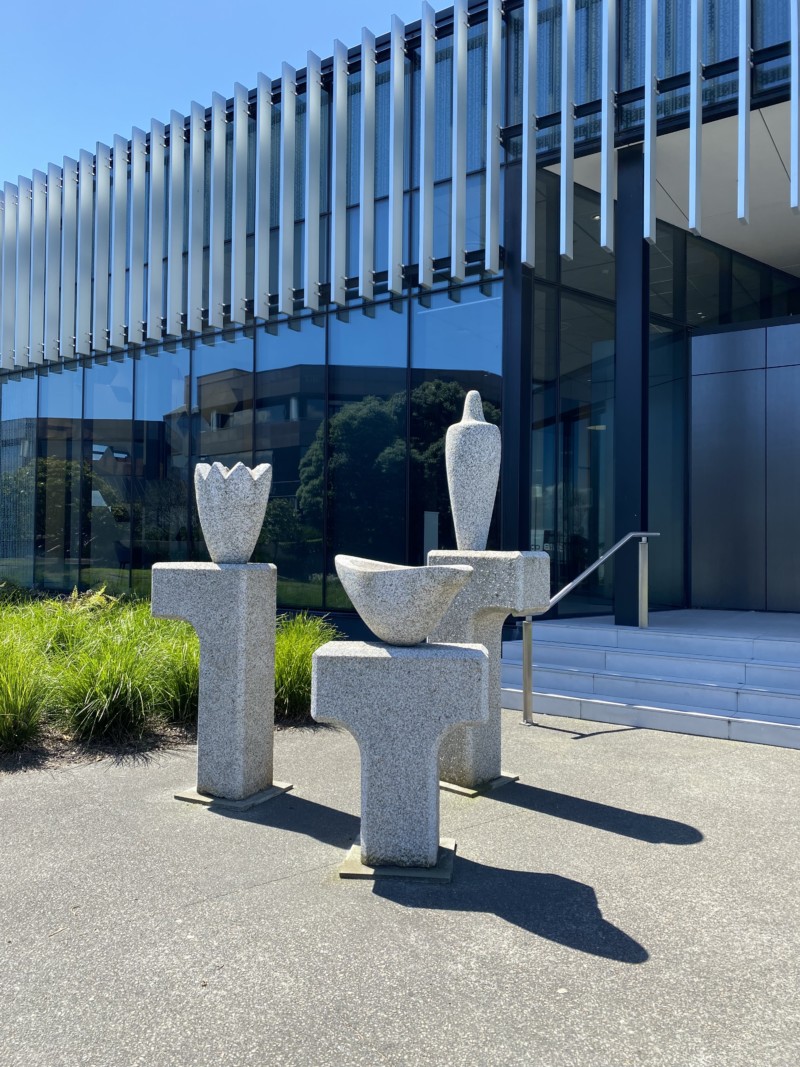GRAHAM, Brett;
Te Piriti Puāwai
1997
Cornish granite

This sculpture—the title of which translates as ‘The Flowering Bridge’—was commissioned by the Fletcher Challenge Trust in 1997 in order to make use of blocks of Cornish granite that had formed part of the original Waterloo Bridge in London. Built in 1817, it was named for the famous 1815 battle that saw the final defeat of Napoleon by combined British and Prussian forces led by the Duke of Wellington.
The bridge was demolished in 1936. Blocks not needed in the construction of the new bridge over the River Thames were sent to the New Zealand Marble Company, at that time a subsidiary of Fletcher Construction. For many years they remained in the company’s Penrose plant yard until a sculptor willing to tackle the uniquely hard and difficult to carve granite could be found.
The metaphor of a deconstructed bridge is used to form three columnar structures, each alluding to the semi-elliptical arches of Waterloo Bridge. Upon each column sits a symbol of a particular epoch in the history of Aotearoa.
On the first column is a stylised rendering of the Duke of Wellington’s distinctive plumed bicorne hat, a potent symbol of British authority. Perhaps there is some ironic significance in the fact that the sculpted hat is inverted. Its shape is also a reminder of the hat worn by Governor William Hobson at the time of the signing of the Treaty of Waitangi in 1840. Hats of the same type were later worn on ceremonial occasions by many succeeding male Governors-General of New Zealand.
The second column features a lone bird-like sentinel which refers to our guardianship of the land, the responsibility of all who live and work here. The third connects the present to the future. The flower depicts the blossoming of our forests and natural resources.
Te Piriti Puāwai was officially unveiled by Sir James Fletcher on Thursday 11 December 1997.
Provenance
1997–
Fletcher Challenge Art Collection (later Fletcher Trust Collection), commissioned 1997

